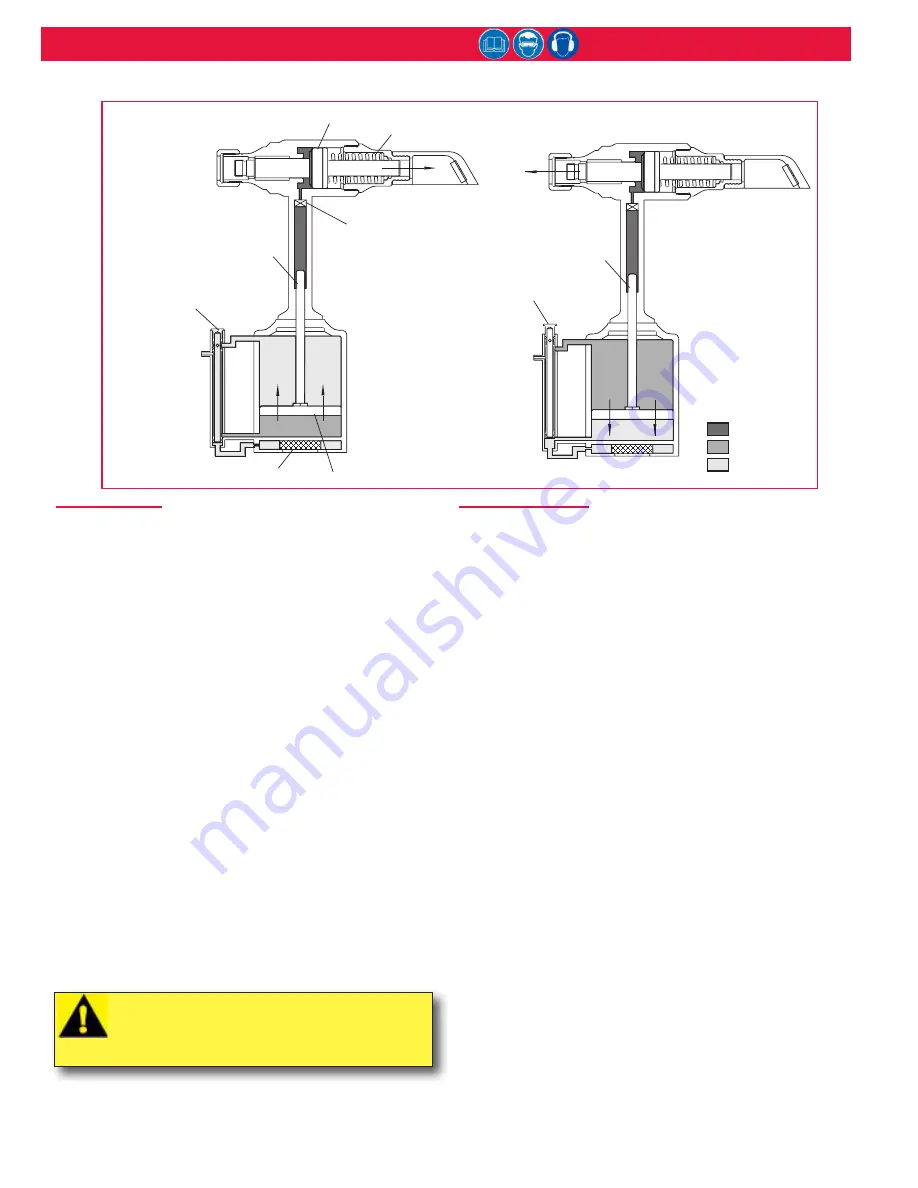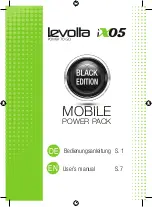
6
202 series Pneudraulic Installation Tools
(HK938)
The
202
series of tools ship with a plug in the air inlet
connector. The connector has 1/4-18 female pipe
threads to accept the air hose fitting. Huck recommends
quick-disconnect fittings and a 1/4” inside-diameter air
hose. The air supply should be equipped with a filter-
regulator-lubricator unit, and access to a 90 psi (
6.2 bar
)
air supply capable of 8.5 scfm (
241 l/m
).
NOTE
:
Air quick-disconnect fittings and air hoses
are not available from Huck International, Inc.
1. Remove the shipping plug from air inlet connector
and add a few drops of an approved hydraulic fluid
.
2. Screw the quick-disconnect fitting into the air inlet
connector.
3. Set the air pressure on the regulator to
90–100
psi, and connect the air hose to the tool
. Press and
release the trigger a few times to cycle the tool.
4. Disconnect the air hose from the tool, and remove
the retaining nut. Select the proper nose assembly
for the fastener being installed.
5. Screw the collet assembly (including the lock collar
and shim if applicable) onto the spindle and tighten
with a wrench.
6. Slide the anvil over the collet assembly and into the
counterbore. Slide the retaining nut over the anvil,
and screw the nut onto the head.
7. Connect the air hose to the tool and install fasteners
in a test plate of proper thickness with proper size
holes. Inspect the fasteners.
If fasteners do not pass inspection, see
T
roubleshooTing
to investigate possible causes.
NOTE
:
On older nose assemblies with lock collars, use
Loctite
®
243™ on collet threads, because the 202 pull
piston does not have staking holes. Refer to the nose
assembly drawings that shipped with nose assemblies.
Preparation for Use
CAUTION: Do not use TEFLON
®
tape on
pipe threads. Tape can shred, resulting in
malfunctions. Threadmate
®
is available in a
4oz. tube from Huck (P/N 508517).
PULL STROKE
When the trigger is pressed, the throttle valve moves
down to the PULL position, and pressurized air is
directed to the bottom of the air piston, causing it to
move upward (as shown above). The air above the air
piston is exhausted and directed through the center of
the throttle valve and out the bottom of the tool.
As the hydraulic piston rod moves upward, a column
of fluid is forced into head, which moves the pull piston
rearward. The attached nose assembly moves with the
pull piston to start fastener installation.
RETURN STROKE
When fastener installation is completed, the trigger is
released. Air pressure, with the assistance of a spring,
sends the throttle valve to the up (RETURN) position.
Pressurized air is re-directed to the top of the air piston
(see above), causing the air piston and hydraulic rod to
move downward.
The air from below the piston is exhausted through the
bottom of the tool, and springs force the pull piston to
return to its home position. The damper valve impedes
oil flow at pinbreak to prevent “tool kick.”
Principles of Operation
TEFLON
is a registered trademark of E. I. du Pont de Nemours and
Company.
Threadmate
is a registered trademark of Parker Intangibles, LLC.
Loctite
is a registered trademark of Henkel Corporation, U.S.A.






































